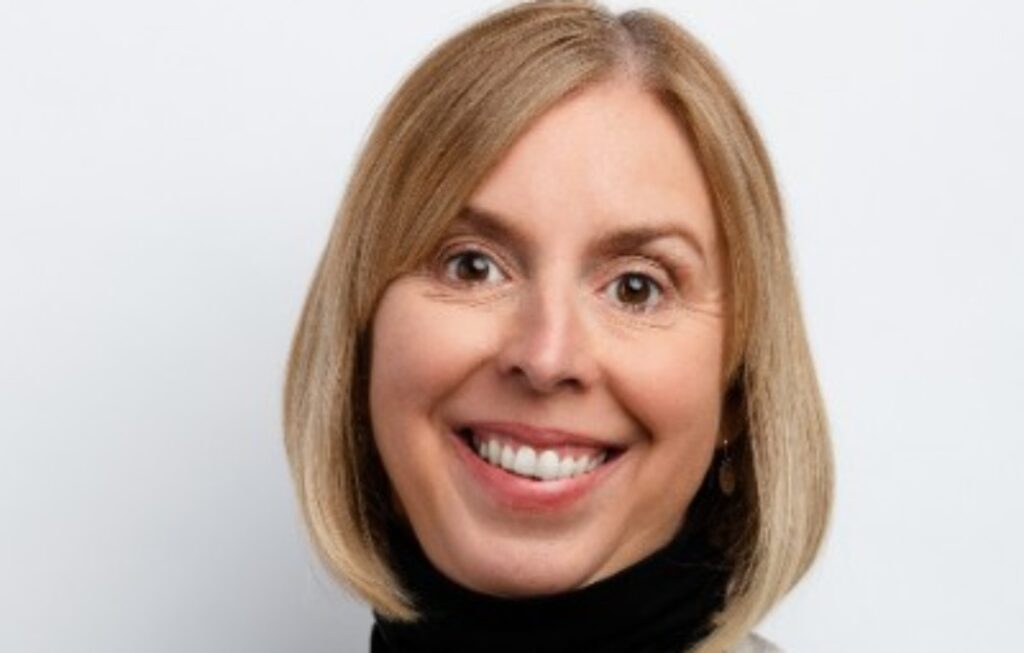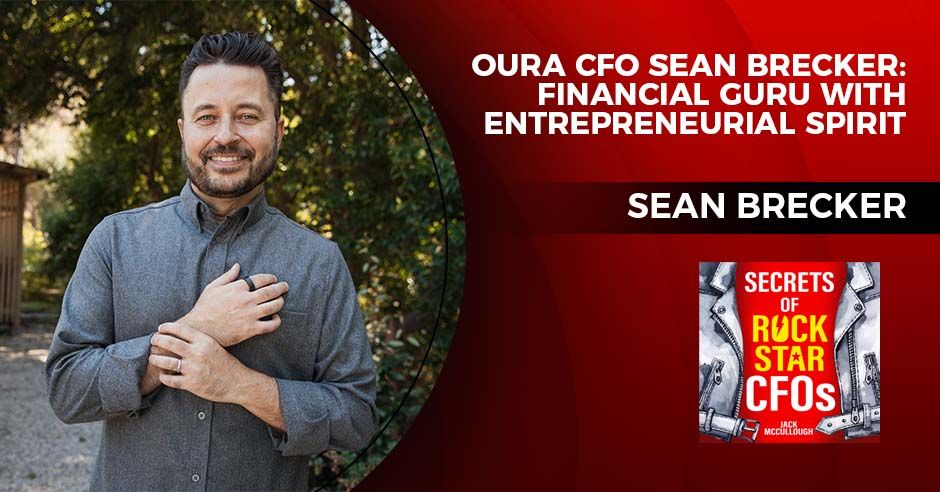
Even before the Covid crisis, corporate leaders were being hounded and haunted by the imperative of digital transformation. But heeding the call still leaves many asking at least two big questions: What is it—really? And how do I go about leading the digital remaking of my company?
Digital approaches are in the DNA of most companies started in the last few years. But knowing how to embark upon and execute digital transformation can be more difficult for operators in legacy industries. The distraction of the current crisis makes it even more so.
“What we are trying to achieve is a fundamental change in our thinking,” says Dan Knotts, CEO of RRD, a Chicago-based integrated-communications giant that began business 164 years ago as the commercial printer RR Donnelley & Sons. Today’s transformation requires RRD “to fundamentally rethink our business model. Our digital revolution is a key enabler of our path forward.”
While for some CEOs a digital path becomes obvious and simply must be embraced, for other companies a promising approach to transformation isn’t apparent, is too far a reach or just isn’t possible.
“It’s a matter of getting Uber-ed before you get Kodak-ed,” says Jim Ryan, CEO and president of Flexera, an IT-management software company based in Itasca, Illinois. “Every single company in the marketplace is a tech company that is now being powered by software and the cloud. That represents great opportunities to go and disrupt markets—and to be disrupted.”
One big reason so many CEOs can get gobsmacked boils down to the new speed of innovation. “The scale and pace of change across almost any industry is almost exponential now,” says Peter Dahlstrom, a senior partner at McKinsey and co-author of the new book, Fast Times: How Digital Winners Set Direction, Learn and Adapt. “It isn’t just five to 10 percent a year—it’s 10X, 100X, maybe even 10,000X over the course of a couple of years.”
To avoid being victimized by this tsunami of change, Dahlstrom recommends focusing on three things. Accelerate digital transformation, but only after “taking a bit of time to think through what you want to do.” Scale the process by moving it to the center of the company instead of keeping it in “a handful of agile tribes for testing.” And, finally, sustain change by attracting and keeping talent, insourcing IT functions that have been sent overseas and “reskilling” legacy employees.
Some CEOs figure they’ll slide in behind the industry leaders in digital transformation in a “fast-follower” strategy. “But that doesn’t work anymore,” Dahlstrom warns. “You have to be first; moving slow isn’t really an option. If you’re not fast and first, you’ll really struggle. You can’t miss the beat and fall behind in the innovation cycle.”
The mission? Change before change takes you under. Some tips.
DON’T SETTLE FOR MERE ‘DIGITIZATION’
Roger Crandall, CEO
Mass Mutual, Springfield, MA
You have to tear up the playbook and build a real, end-to-end digital company. And that’s different than just digitizing what you do today. For us, if you take an application on paper and just put it in a digital format, so an advisor can sit with you with an iPad, it’s not really transforming anything. It ultimately kicks back to the same stack you had; it’s just easier.
So we have to imagine applications that are built as digital apps so now, when you’re filling them out, they feed back into our underwriting algorithms and directly into our administrative platforms and tie all the way back to claims. That’s different than taking pieces and digitizing them or even optimizing an existing process. And that’s the approach that you’re ultimately going to compete against: someone who said, “I’m going to go after this problem or this opportunity and build a modern technology platform to do it.”
SET UP SKUNK WORKS
Chris Michalak, former CEO
Alight Solutions, Lincolnshire, IL
Our carve-out in 2017 from Aon Hewitt gave us the potential to evolve to maintain our leadership position in the industry, particularly as it related to digital transformation. We needed to create a vision for the company around being more tech-driven and consumer-centric.
We knew innovation would be important. So we took some really practical steps such as taking our top 100 leaders to a two-day offsite focused on innovation. Then we went much further by joining the 1871 innovation lab and creating an internal innovation lab called Spark Tank.
At 1871, we’ve joined more than 100 other companies and other entities in the Chicago area to tap into the knowledge, energy and experience of some of the area’s most forward-thinking entrepreneurs to create new solutions. Our people can interact with others working on consumer-facing applications.
I also felt having a presence there sent a message about where we were going and what was crucial to us. We wanted to put cultural stakes in the ground that would communicate a message about who we want to be and what’s important about making our digital transition.
Spark Tank is an effort to make sure we’re listening to our 15,000 employees and creating opportunities for them to contribute to our digital transformation. We have done it twice so far, running it as a competition that has involved more than 80 teams from around the world so that the best ideas bubble up throughout the company. We actually funded an initiative of the winning team and sent them to 1871 so they could take that idea to the next step. Now it has the potential to produce an actual result that could come to Alight while engaging people in innovation and digital transformation in ways that affect the company.
DEFINE AND CONQUER
Doug Straton, Chief Digital Officer
The Hershey Company, Hershey, PA
The biggest component of digital transformation is the cultural change that goes along with it. It’s good to have a strategy and technology that will enable it, but the hardest work is around culture, re-education and the upscaling of the organization.
So, you need to define what digital transformation is, and what it isn’t. Because the mere talk about digital transformation conjures up feelings in [employees] that this is going to be something they don’t understand. Build a narrative that people do understand because they’re already in the middle of digital transformation in their personal and professional lives. You can boil it down to, “10 years ago you had an address book, a calendar and a cell phone, and now you’ve got them all on one device—and you can watch TV with it too.” That’s a major transition that people understand that can make it a little less scary.
The second thing is don’t bite off more than you can chew. Everything being affected by technology right now leads people to believe they have to focus on everything—which is an impossible task. The prioritization of what you’re trying to get out of transformation—growth, efficiency or a balance of both—needs to be clear. Otherwise you’ll fail.
The third thing is to have strong communications plans internally. That’s probably where we’ve struggled. It’s hard to get a narrative that resonates with everyone without dumbing down the topic too much. You strategize and come up with bold plans, and as an organization work on those things for months and years. And you think everyone knows what they’re working on. But if there isn’t a good communications plan to go with your overall plan, then you’re doing yourself a disservice. People have to understand what they’re doing as part of digital transformation, why they’re doing it and the expected outcomes. It has to be clear.
You can convey to folks that they’re already participating in a digital transformation—it just might not be as strategic or well-coordinated as it should be. Then you can explain that we’re already doing these big initiatives in other areas; with Hershey, much of that is how we’re improving our approach to nutrition and the supply chain. And you can say it’s possible to do another big initiative.
And you may already be doing [digital transformation] in various teams and functions. You just have to step back and proactively unify and align all those activities in one broader effort, and we’ll end up finding lower costs and less complexity and less work to do because we’re better unified. It becomes more of a, “Let’s do what we’re already doing—just a little more smartly.”
EMBED IT IN EVERYTHING
James Loree, CEO
Stanley Black & Decker, New Britain, CT
In 2014, we created a digital accelerator in Atlanta and a “digital center of excellence” in the company where we could have subject-matter experts who could fan out to our portfolio of businesses and demonstrate to people what our capabilities were in areas such as digital marketing or the Internet of Things. But soon it occurred to me that the pace of change was accelerating and things were coming at us faster than we’d expected even two years earlier. The light bulb went off that we needed to do something dramatically different.
And we did a lot of things, including embracing ESG, diversity and inclusion, which has made us a magnet for digital talent. We’ve also embraced lifetime learning and what we call “extreme innovation.” All of that has helped us ensure that digital transformation now is embedded in everything. We knew it would become pervasive, but we didn’t know how. What we’ve been able to do over the last couple of years is figure out how.
DIFFERENTIATE WITH DIGITAL TECH
Nick Marsh, CEO
Founders Table Restaurant Group, New York City
We just established a new company that brings together two major brands, with the promise of adding others, around the success of technological transformation and identifying opportunities to build on it.
I was CEO of Chopt, which I founded 19 years ago with the simple goal of making the best salads on the block. Our customers come to us because of the quality and creativity of our products, but now they want them as fast and conveniently as possible. Where tech starts to play a massive role in our space is that what was fast back then doesn’t cut it anymore. They were noticing the same thing at our other brand, Dos Toros Taqueria.
We’ve made significant investments in tech to be not just the best but the fastest and most convenient salad, including introducing payments without credit cards and without cash seven or eight years ago with mobile payments and QSR codes. Based on the success of that, we moved forward and developed online ordering. Now digital represents about 40 percent of all our consumer touches.
But we have also learned that each person ordering in a different scenario actually has different needs from their technology. If you’re ordering for yourself, you might be most focused on loyalty points. But if you’re in an office and your administrator is ordering for a meeting, they need to be able to pay centrally and have a single point of contact for getting all that product arriving at one time. If you’re at home, you want to be able to save and preview previous orders based on what different people in the family have ordered.
So, we’ve formed Founders Table to get ahead of customers’ digital needs for our existing brands and use the platform for multiple brands going forward. We want to create a seamless ordering experience with all of a customer’s information, where they’re earning loyalty rewards among a best-in-class group of brands. We think success with digital transformation, and identifying opportunities to build on it, could be a meaningful differentiator.
MAKE A CONTENT PLAY
Barry McCarthy, CEO
Deluxe, Minneapolis, MN
We invented the checkbook, but only 38 percent of payments in America today are checks, so we have created digital payment types and digitized distribution of new digital products as well as our analog and physical products. Just as important, we start with what kind of business problem we’re trying to solve— not just, “Here’s a product and why you should buy it.”
To that end, we have made a major effort to provide great digital content that is organized around how our customer thinks. For each major business issue, we provide a link to an online white paper with use cases and examples of how other businesses in your situation have solved their problem.
We also created a TV program called “Small Business Revolution” with segments that answer some of the same questions. We produce the program, and we distribute it on Prime, Hulu and YouTube—and soon it will be in-flight entertainment on Delta. We film it entirely, and it’s one of our employees who co-hosts along with Ty Pennington [of “Extreme Makeover” fame].
We have a national competition where thousands of small towns compete and we choose one as the winner. Then we put $500,000 into the community to help renovate Main Street, and we select eight businesses to help them grow.
It’s not an infomercial; it’s truly helping small companies succeed and advising them on how to grow their business. So we don’t just give people a product answer and a sales pitch but educate them and give them value.
ADAPT TO THE INEVITABLE
Mike Pappas, CEO
Keyes Co., Miami
No business has been changed more dramatically by digital transformation than ours. Once Zillow and Trulia came into the market in 2005 and 2006 with the multilist online, it changed the dynamics of the business, and Realtors followed suit. We, in a sense, cooked our own goose.
So what we’ve done over time is become the “last mile” for home buyers. With our hyper-local knowledge and local expertise, we’re very difficult to beat. Also, we have forced the evolution of our industry by adding on ancillary businesses—such as everything from mortgage insurance to cable hookups for a new home. If we hadn’t done that, we wouldn’t be here. If we were still running the brokerage business our father ran, we’d be out of business.
STAY TRUE TO YOUR CORE
Dan Knotts, President and CEO
RRD, Chicago
We prioritize remaining true to our core while embracing change. Maintaining a focus on your core values and objectives doesn’t mean ignoring new technologies, processes or ideas. What it does mean is that if you have a well-defined strategy, you should utilize new technologies to enhance strategic execution rather than believing that new technologies, by themselves, are your strategy.
As we head into the new decade, it’s important to recognize that while technologies and overall business processes must change, the fundamental objective of supporting your customers with relevant, high-quality products and services should not.
FOCUS ON THE CUSTOMER EXPERIENCE
Jeff Webb, Founder
Varsity Brands, Dallas
We keep growing because we have used digital technology to give all of our customers the ultimate in online communications and customization, which is what they all want when it comes to our businesses. Everything we do in our digital transformation is about making the customer experience as great as possible.
On the uniforms side, for example, our sales reps can be online and on the phone with a cheerleading coach and bring any outfit up on the screen and immediately [render] it in that school’s colors, and from all angles, so they can see exactly what the uniform is going to look like. Actually taking part in designing the uniform is something the customer sees as a great service. We bring the fashion component to the uniform. And our ability to do custom design and manufacturing—and do it efficiently—is hard for competitors to compete with.
When it comes to our cheerleading events, we’ve focused a lot of digital resources on computerized scoring. We make sure that competitions are set up smoothly and meets everyone’s expectations for instant access to scoring, so people can see how the competition is coming along. It’s an important part of what we do to make the customer experience as easy and pleasant as possible.
START YOUR OWN STEM ACADEMY
Blake Moret, CEO
Rockwell Automation, Milwaukee
We know there’s going to be a shortage of people with advanced-manufacturing skills and the interest in moving to manufacturing companies. That’s a persistent threat to our industry. So part of our digital road is to start with STEM-based education when future workers are very young, then proceed to additional education and hands-on experience on the job, and really to lifelong learning. We have to maintain our commitment to investing in employees throughout what could be a 40-year career.
For example, we partnered with ManpowerGroup to create the Academy of Advanced Manufacturing, which is an intensive 12-week program that certifies highly qualified military veterans for work in high-demand technician roles for us. They’re able to get good-paying jobs, which is the right next step for many of them, instead of going on to formal schooling. A lot of them don’t recognize how valuable they can be at the heart of an industrial company with their soft skills from the armed forces and hands-on experience with manufacturing training.
VALUE WHAT YOUR CUSTOMERS VALUE
Dean Sonderegger, SVP, General Manager, Legal and Regulatory, U.S.
Wolters Kluwer, New York City
We survey our customers on an ongoing basis online using the Net Promoter Score survey. It’s a good measure of our health. Virtually everyone who responds to us—both promoters and detractors—we call. Not everyone answers.
But it has allowed us to get very close to our customers and get lots of feedback. Then we organize the feedback into categories. And there are patterns that reflect some of the shortcomings of where we’re at. Then we ask: Can we address that in our current situation? What’s the cost of that? Or do we have to go through and rethink everything?
This tool helps in our digital transformation by making sure that we understand what our customers are doing and want instead of taking an ivory-tower approach. It helps us know our market and our value story.
COMPETE WITH AMAZON— AND WIN!
David Wenger, CEO
Bridge Connector, Nashville
Nashville has become a tech hub, with Amazon setting up a big new complex here and also a big campus of Google, and other major tech companies. But we have managed to build an employee base of 130 people across the country, most in Nashville, with our creation of the first “no-code” platform for integrating health-care software.
There’s actually an abundance of talent here because this has been a healthcare hub. Plus, we are capturing a number of people from California, New York and Austin, and have built a significant level of IP on our team. We could have gone to San Francisco or New York or many different places, but we found a very good foundation here and decided to build from there.
And we don’t view our staff as wanting to move to Amazon or Google. We pride ourselves on our culture and our innovation. We want to help change an industry, and everyone on our team has gravitated toward that mission.








